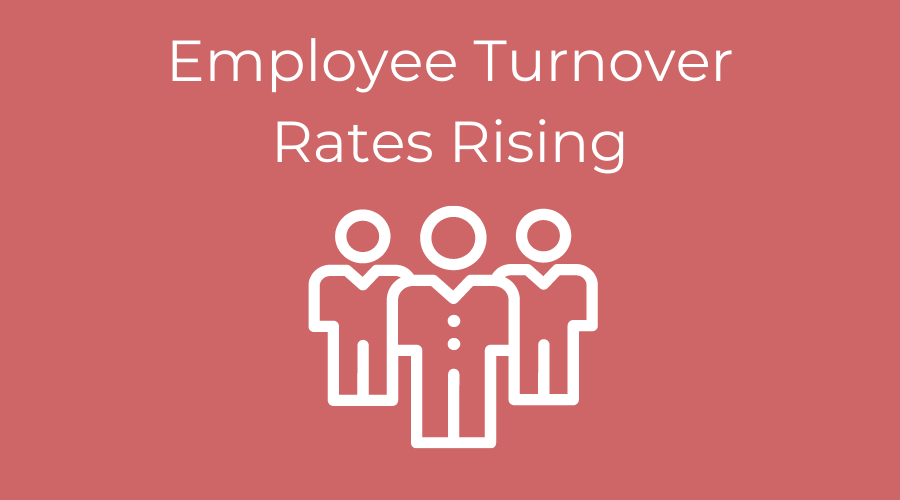The voluntary employee turnover rate is soaring, reaching levels rarely seen in the last 20 years. For March, the average for the private sector was 2.7%, which translates into an annual voluntary employee turnover rate approaching one-third.
Imagine the impact to a company of losing every third worker, yet that is what many businesses are facing. For restaurants, hotels and motels the employee turnover rate is even worse, a stunning 5.3%.
Now add in the number of workers retiring, fired and laid off and the average national private sector employee turnover rate – total worker churn – stood at 4.1%.
It’s “The Great Covid Job Churn,” says William Vanderbloemen, CEO of an executive search firm, and it’s “coming for you.”
Writing in Forbes in January, Vanderbloemen, predicted 2021 “will result in unprecedented turnover in job markets across the country.”
Four months later, data from the U.S. Department of Labor shows how right he was. The government’s monthly surveys of job openings, hires and turnover shows openings were at a record high 8.1 million in March. Yet only 6 million hires were made, a number equal to the total separations – quits, layoffs, retirements and firings – during the month.
No wonder employers are having such difficulty in filling jobs. Instead of being able to aggressively increase employment, employers are barely able to keep the workers they already have.
Small business is being hit especially hard by the eagerness of workers to change jobs. The National Federation of Independent Business reported 44% of small business owners had openings they couldn’t fill. The Wall Street Journal said it was the highest level in 50 years.
Employee Turnover Stats
Business employing 10-49 workers, a group that includes most fast-food restaurants, had an employee turnover rate of 3%. Those with 50 to 249 employees had a voluntary turnover rate of 2.9%.
The reasons for the increasing employee turnover rate are both practical and predictable, as wells as emotionally existential.
While the pandemic raged and businesses were closed, workers who might otherwise have sought new opportunities or the next step in their career held off. The uncertainty of what might happen next was unnerving. Now that the light at the end of the tunnel is bright, workers are more confident about changing jobs.
Another group of workers who discovered they enjoyed working remotely more than commuting to an office is seeking out employers who will permit them to work from home part or all of the time. A new survey of remote workers found 58% will look for another job if they can’t continue working remotely.
Many others who might not have questioned their career choice had time during the Covid lockdown to reevaluate where they were and what they wanted out of their work life. Some of the turnover is due to these workers going back to school to learn new skills. Others are leaving for careers that may be more fulfilling than what they had been doing.
While some turnover is inevitable, there are things an employer can do to minimize the loss of talent.
The first place to look is compensation and benefits. If the pay is not competitive or the package is merely average, improving compensation will help take money out of the picture.
Career advancement and training is a key reason people have historically changed jobs. Even in the smallest shops, owners and employers can provide opportunities for workers to develop their skills and learn new ones. Workers at larger employers can be given additional responsibilities and a detailed plan for career advancement.
Scheduling and flexibility was becoming a hot button issue long before Covid. Now, retention may well depend on it. Workers have demonstrated they can be as productive at home as in the office; many were even more productive without the interruptions common in a communal workspace. Because of Covid, workers enjoyed the opportunity to take care of family chores and still get their work done. Providing flexibility will keep workers from searching for another job that does.
With the employee turnover rate as high as it has ever been, employers need to consider doing everything they can to retain the best workers. Recognizing that the pandemic has changed the nature of work and that they must change how they manage employees is the first step.
### Contributions by John Zappe ###


